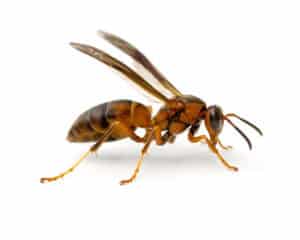Wasps: How to Identify and Manage These Pesky Pests
As summer’s warmth beckons outdoor activities, wasps become more active, often intruding on our picnics and garden parties. Understanding these insects is crucial for effective management and prevention. Here’s a closer look at wasps and how you can deal with them.
What Are Wasps?
Wasps are social insects belonging to the order Hymenoptera, which also includes bees and ants. Unlike bees, which are known for their role in pollination and honey production, wasps are primarily predatory or scavengers. They play a role in controlling pest populations by preying on other insects, but their aggressive nature can make them unwelcome guests.
Identifying Wasps
Wasps are often mistaken for bees due to their similar appearance, but there are key differences:
- Color: Wasps typically have a more vivid coloration, with bright yellow and black bands. Bees are generally covered in fuzzy hair and are more often brown or golden.
- Body Shape: Wasps have a smooth, streamlined body with a narrow waist, while bees are more robust and hairy.
- Behavior: Wasps are more aggressive than bees, especially when their nests are threatened. They can sting multiple times, unlike bees that usually sting once and die.
Types of Wasps
Several species of wasps are common, including:
- Yellowjackets: These are the most aggressive and are often found scavenging for food. They can nest in the ground or in wall cavities.

- Hornets: Larger than yellowjackets, hornets have a more intimidating presence. They build large, paper-like nests in trees or eaves.

- Paper Wasps: These wasps are known for their distinctive paper-like nests, which they construct in sheltered locations like under eaves or in roof voids.

Managing and Preventing Wasps
Effective wasp management involves both prevention and control:
- Avoid Attracting Wasps: Keep food and drinks covered when outdoors. Clean up spills and dispose of trash properly. Wasps are attracted to sweet foods and drinks, so being mindful of these can reduce their presence.
- Seal Entry Points: Inspect your home and seal any gaps or cracks where wasps might enter or build nests. Pay particular attention to areas like eaves, vents, and attics.
- Use Wasp Traps: Commercially available traps can help catch and reduce the wasp population around your home. Place them away from high-traffic areas to draw wasps away from where people congregate.
- Professional Help: If you find a wasp nest on your property or are dealing with a large infestation, it’s best to contact a professional pest control service. They have the expertise and equipment to handle wasp problems safely and effectively.
In summary, while wasps are beneficial to the ecosystem, their aggressive behaviour can make them a nuisance. By understanding their behaviour and taking preventative measures, you can enjoy your summer without unwanted interruptions. For persistent or large infestations, professional pest control services can provide peace of mind and effective solutions, for an obligation free quote contact us www.amgpest.com.au


0 Comments